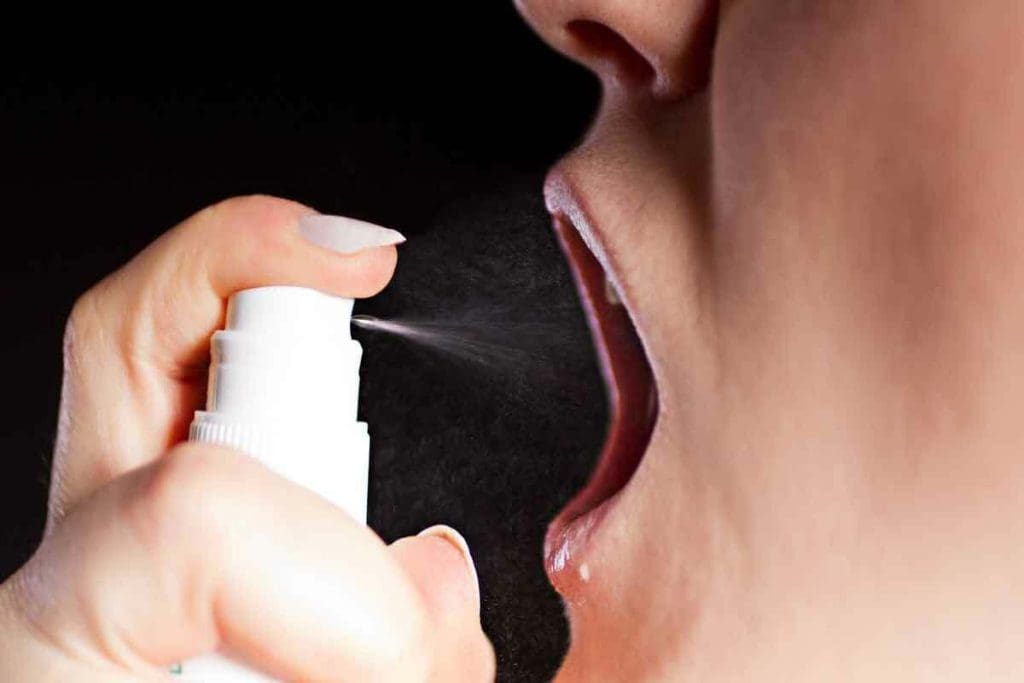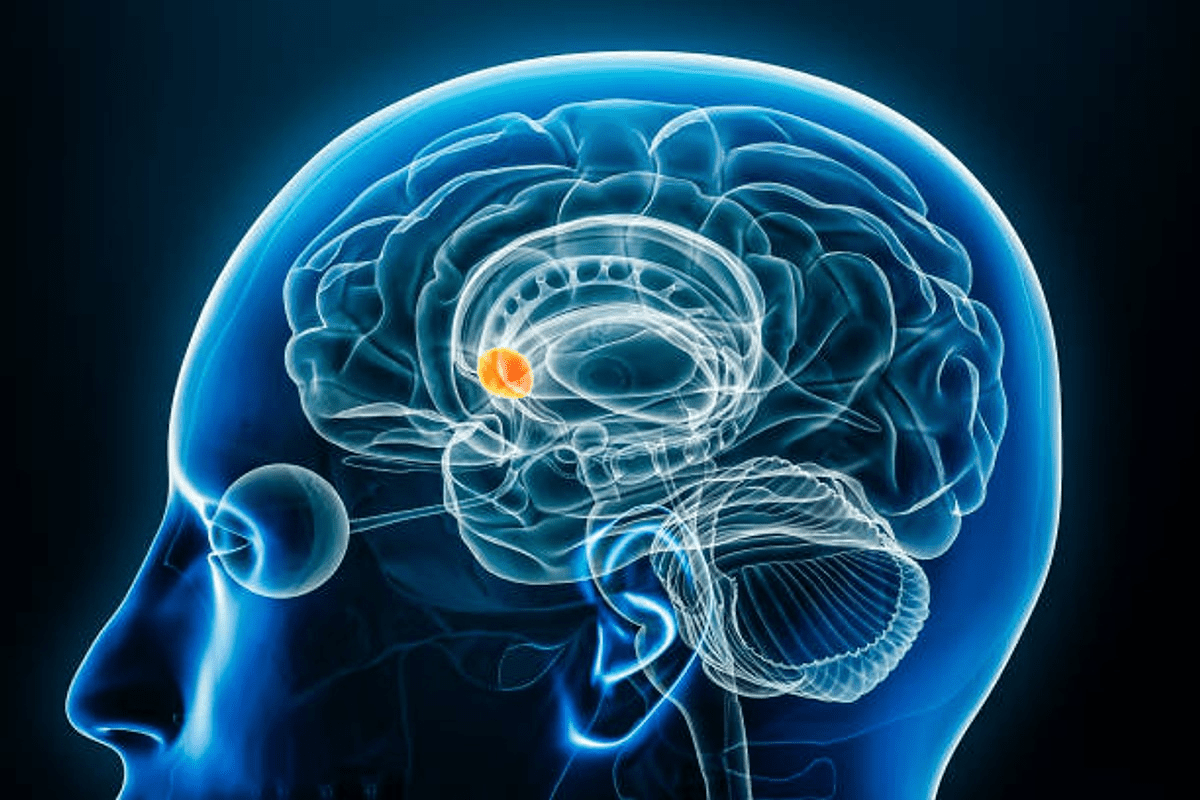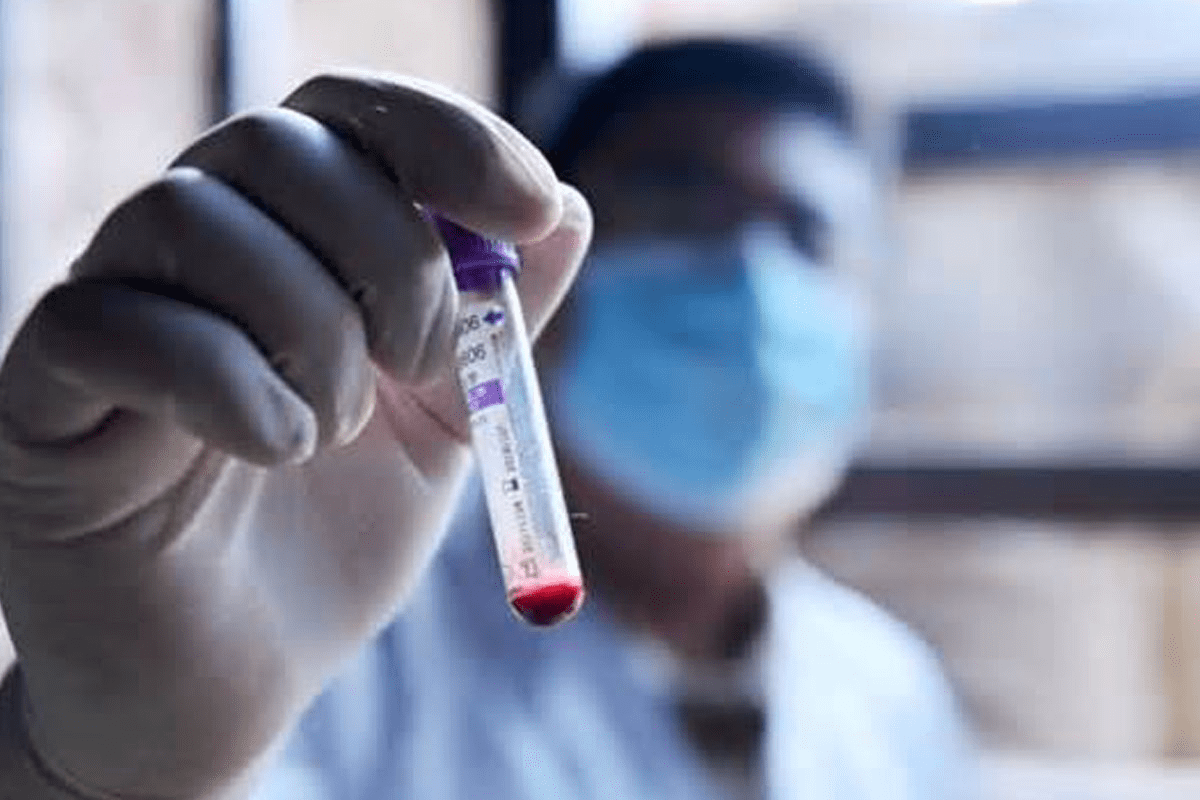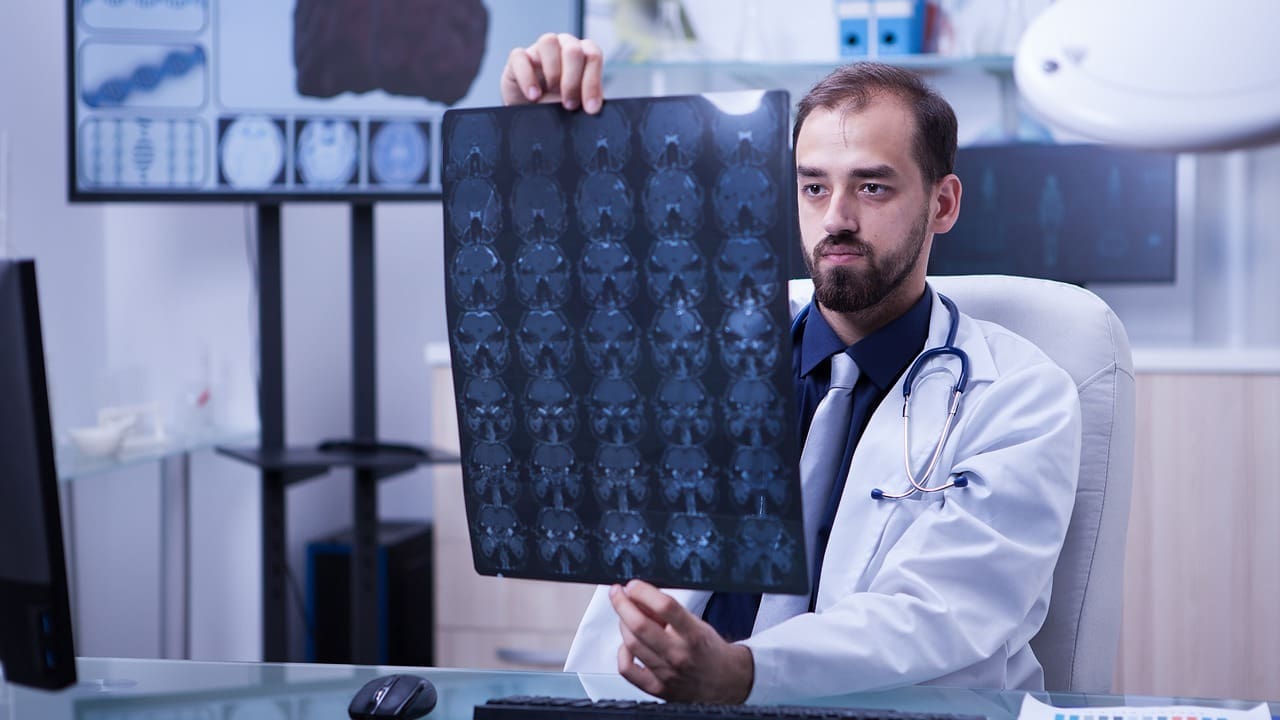Last Updated on November 27, 2025 by Bilal Hasdemir

What Does Oral Contrast Taste Like? Preparing for Your CT Scan
Patients preparing for a CT scan often wonder ” what does oral contrast taste like? At Liv Hospital, we understand that comfort and reassurance are just as important as accurate imaging. That’s why we help patients know what to expect before their scan.
Oral contrast agents are special liquids used to make internal organs more visible during a CT scan. They often have a bitter or chalky taste, which some patients find unpleasant. Depending on the type used, the flavor can range from mildly sweet to slightly metallic.
Our team at Liv Hospital takes every step to make the process easier ” offering chilled contrast drinks, flavor options when possible, and guidance on how to drink them comfortably. By addressing these concerns early, we help ensure patients feel relaxed and ready for their scan, leading to clearer, more accurate results.
Key Takeaways
- Oral contrast agents have a bitter or chalky taste that can affect patient comfort.
- Understanding the challenges of oral contrast is key to the best patient outcomes.
- Liv Hospital puts a big focus on patient experience and scan accuracy.
- It’s important to make patients more comfortable for successful scans.
- Building trust and understanding between patients and doctors is vital for good imaging care.
Understanding Oral Contrast Agents for Medical Imaging

Oral contrast agents are substances used to make body structures clearer in medical images. They help doctors see inside the body better, which is key to accurate diagnoses. This is very important in CT scans.
What Is Oral Contrast and Why Is It Used?
Oral contrast agents are taken before a CT scan or other imaging tests. The main goal is to show the difference between various tissues and structures in the gut and nearby areas. This is vital for spotting issues like gut problems, tumors, or other abnormalities.
“The use of oral contrast agents greatly improves CT scan diagnostics,” say doctors. These agents make it easier to see different parts of the body. This helps find problems that might not be seen without them.
Types of Oral Contrast Media
There are mainly two kinds of oral contrast media: iodinated contrast media and barium-sulfate solutions. Iodinated contrasts are best for CT scans because they work well and are safe for most patients. Barium-sulfate solutions are used for X-rays of the gut.
- Iodinated contrasts: These are water-soluble and quickly absorbed by the body, making them ideal for CT scans.
- Barium-sulfate solutions: These are not absorbed by the body and provide a clear outline of the gastrointestinal tract.
Choosing between these contrasts depends on the imaging needs and the patient’s health. Knowing about these agents helps us understand their role in medical imaging and the challenges they face.
What Does Oral Contrast Taste Like?

Patients often worry about the taste of oral contrast agents during medical imaging. These agents help make body structures clearer in scans. Their taste and feel can make patients more comfortable or anxious.
Common Taste Descriptions from Patients
Many say oral contrast tastes very bitter or chalky. Some compare it to metallic or medicinal tastes. This strong, unpleasant taste can make patients uncomfortable and worried.
Texture and Consistency Considerations
The feel of oral contrast agents can also change how patients take them. Some are thick and viscous, while others are liquid. The feel can affect how easy it is to swallow, making some harder than others.
Variations in Taste Between Different Contrast Types
Each type of oral contrast agent tastes different. Barium-based ones are often chalky or metallic, while iodine-based ones are bitter. Knowing these differences helps doctors better prepare patients and improve their experience.
| Contrast Type | Common Taste Descriptions | Texture |
| Barium-based | Chalky, Metallic | Thick, Viscous |
| Iodine-based | Bitter | Liquid |
The Challenge of Drinking Oral Contrast
Drinking oral contrast agents is a key part of many imaging exams. But it’s hard for many patients. It’s not just about drinking a liquid. It’s about tolerating a substance that tastes bad and feels odd, in big amounts, and on time before the scan.
Required Volumes for Different Procedures
The amount of oral contrast needed changes with each imaging procedure. For example:
- CT scans need a lot, up to 1 liter or more, to see the whole gut.
- Barium swallow studies require less but need more barium to see the esophagus well.
- MR enterography needs a certain amount and strength of contrast to show the small bowel.
These different needs can be tough for patients, like those with gut problems or trouble drinking a lot.
Timing Requirements Before Imaging
When to drink the contrast is key and changes with each procedure. Patients must drink it over a set time, from minutes to hours, before the scan. This timing is important to make sure the contrast is in the right part of the gut during the scan.
In CT colonography, drinking contrast for hours helps tag stool and fluid. This makes it easier to see stool from polyps.
Patient Compliance Issues Related to Taste
The taste and feel of oral contrast can be a big problem. Many find it bitter, metallic, or chalky tasting. The texture can also be unpleasant, feeling too thick or gritty. These issues can make patients not want to drink it or even refuse.
To help, we need to think of ways to make it better. This could include making it taste better or finding new contrast agents that are easier to swallow.
Methods to Improve the Taste of Oral Contrast
It’s important to make oral contrast taste better for patients during medical imaging. The bad taste of oral contrast can make patients less willing to cooperate. This can hurt the quality of the images taken.
Traditional Approaches Used by Imaging Centers
Imaging centers have tried different ways to make oral contrast taste better. They mix the contrast with flavored drinks or juices to hide its bitter taste. For example, some use pineapple or strawberry flavors.
These methods can work, but how well they do depends on the patient’s taste and the contrast used.
Specialized Flavoring Products
New flavoring products have been made to make oral contrast taste better. Breeza is one such product, made to cover up the bad taste of barium-based contrast media.
Research shows that using Breeza and similar products can make patients happier and more willing to go through imaging. These products help by contrasting the taste less bitter.
Comparison of Traditional and Specialized Methods
| Method | Effectiveness | Patient Satisfaction |
| Traditional Flavor Mixing | Variable | Moderate |
| Specialized Flavoring Products (e.g., Breeza) | High | High |
Healthcare providers can make imaging procedures better for patients by using these methods.
Common Side Effects of Oral Contrast
When we talk about oral contrast in medical imaging, it’s key to know the side effects. These agents help make images clearer, but they can cause problems for some people.
Gastrointestinal Effects
Many patients face stomach issues after taking oral contrast. These can include:
- Nausea: A feeling of queasiness that may or may not lead to vomiting.
- Bloating: Patients may feel full or swollen in their belly.
- Diarrhea: Some people might have loose or watery stools after taking the contrast.
These stomach problems usually go away once the contrast is out of the system. But for some, these symptoms can be really uncomfortable and might need extra help.
Taste-Related Side Effects
Another big issue is the taste of oral contrast. Many people find it tastes metallic or salty, which is not nice and can last a while. This bad taste can make it hard to drink all the contrast, which might affect the quality of the images.
Doctors and patients need to understand these taste problems. By knowing about these issues, we can make patients more comfortable and help them follow through with tests.
Rare but Serious Side Effects to Be Aware Of
Oral contrast agents are usually safe, but there are rare serious side effects. These can affect patient health and safety greatly.
Allergic Reactions to Contrast Media
Allergic reactions to contrast media are a serious side effect. Allergic reactions can range from mild to severe. The worst form is anaphylaxis, which is life-threatening and needs quick medical help.
Symptoms of an allergic reaction include hives, itching, swelling, stomach cramps, diarrhea, and trouble breathing. In bad cases, anaphylaxis can cause low blood pressure, a fast heartbeat, and even loss of consciousness.
Symptoms Requiring Medical Attention
It’s key for patients to know when to get medical help fast. Look out for:
- Difficulty breathing or shortness of breath
- Rapid heartbeat or palpitations
- Dizziness or fainting
- Confusion or loss of consciousness
- Severe abdominal pain
If you see these symptoms, get medical help right away.
Risk Factors for Adverse Reactions
Some things can make you more likely to have bad reactions to oral contrast. These include:
- A history of allergies or previous allergic reactions to contrast media
- Pre-existing medical conditions such as asthma or heart disease
- Kidney problems, as some contrast agents can affect kidney function
If you have these risk factors, tell your healthcare provider before any imaging procedure with oral contrast.
Duration and Management of Side Effects
It’s important to know how long and how to manage side effects from oral contrast agents. These agents help make body structures clearer in medical images. But they can cause side effects in some people.
How Long Do Side Effects Typically Last
Side effects from oral contrast agents are usually mild and short-lived. They often go away within a few hours after the test. Gastrointestinal symptoms like nausea or diarrhea are common and usually last less than 24 hours. Rarely, some effects might last longer, but they are usually not serious.
Methods to Alleviate Common Discomfort
There are ways to ease discomfort from oral contrast side effects. Staying hydrated helps get rid of the contrast agent. Your doctor might suggest over-the-counter meds for nausea or stomach cramps. Eating bland foods or light meals can also help.
When to Contact Your Healthcare Provider
Even though most side effects are mild, some need medical attention. If symptoms last more than 24 hours or get worse, call your doctor. Severe abdominal pain, vomiting, or signs of an allergic reaction are emergencies that need quick doctor care.
Knowing about side effects from oral contrast agents helps patients feel more confident during imaging tests. Always follow your doctor’s advice on managing side effects.
Patient Preparation Tips for Oral Contrast Procedures
Getting ready for imaging tests with oral contrast is key. Knowing what to do before, during, and after helps. This way, you can avoid discomfort and make the process easier.
Before Your Appointment
Start getting ready before you go to the imaging center. Always follow the exact instructions from your doctor. This might mean eating certain foods, drinking a lot of water, or changing your medicine schedule.
- Read the instructions well to know what to do.
- Plan your meals to avoid problems.
- Drink lots of water unless told not to.
Also, wear comfy clothes and avoid jewelry or metal items. They might get in the way of the test.
During the Contrast Consumption
When you drink the contrast, listen to what the imaging center staff says. It might taste bad, but there are ways to make it better.
- Drink it slowly to feel less discomfort.
- Use a straw if it’s okay, to lessen the taste.
- Rinse your mouth with water if you can.
After the Imaging Procedure
After the test, keep following your doctor’s post-procedure advice. This might mean eating normally, drinking more water, or watching for side effects.
| Post-Procedure Guidelines | Description |
| Resume Normal Diet | Slowly go back to eating as you normally do unless told not to. |
| Hydration | Drink lots of water to get rid of the contrast. |
| Monitor Side Effects | Watch for any strange symptoms and tell your doctor. |
By following these tips, you can make your imaging test go smoothly. And you’ll likely feel less discomfort from the oral contrast.
Advancements in Oral Contrast Technology
Oral contrast technology has seen big changes, making imaging better and easier for patients. These updates help make medical tests more comfortable and effective.
New Formulations with Improved Palatability
Scientists are working on new oral contrast agents that taste better. They aim to make the taste of traditional contrast media less unpleasant. This makes it easier for patients to follow through with tests.
New agents also come in different textures and flavors. This makes them more enjoyable for patients, which is key for those who have to go through many tests.
Reduced Volume Protocols
There’s also a move towards using less contrast agent. This is done by making the agent more concentrated. It makes tests more comfortable for patients and makes the whole process more efficient.
- Fewer agents mean less discomfort for patients
- Better contrast means clearer images
- Tests can be done faster, saving time
Future Directions in Contrast Media Development
We’re expecting even more changes in oral contrast technology. There will be personalized contrast agents made just for each patient. New uses of nanotechnology and material science will help create better contrast agents.
“The future of oral contrast agents lies in their ability to balance diagnostic efficacy with patient comfort. As technology advances, we can expect to see more patient-centric solutions.”
As research keeps going, we’ll see contrast agents that are better for both diagnosis and patient comfort. These improvements will be key to the future of medical imaging.
Conclusion: Balancing Diagnostic Needs with Patient Comfort
Oral contrast agents are key in medical imaging but can cause side effects and discomfort. We’ve looked at the different types, their tastes, and the challenges patients face. The goal is to balance diagnostic needs with patient comfort for better care and results.
Putting patient comfort first can lead to better adherence and accuracy in diagnosis. New formulas, like iohexol, aim to reduce nausea and diarrhea. Research shows that some patients benefit from oral contrast, leading to shorter ER stays and lower costs. For more details, check out the National Center for Biotechnology Information website.
To find a balance, we need a team effort. Understanding oral contrast challenges and using new tech can improve patient care without sacrificing accuracy.
FAQ
What does oral contrast taste like?
Oral contrast can taste bitter, metallic, or unpleasant. This depends on the contrast media used, like iodinated contrast or barium-sulfate solutions.
What are the common side effects of drinking oral contrast for a CT scan?
You might feel nausea, bloating, or diarrhea. You could also notice taste changes. These effects are usually short-lived and not too severe.
Are there any serious side effects associated with oral contrast?
Yes, rare but serious side effects can happen. Allergic reactions to the contrast media are one of them. Look out for severe rash, itching, or trouble breathing.
How long do the side effects of oral contrast typically last?
Side effects usually go away soon after the procedure. But fsay ahow long it takes can vary. It depends on the person and the contrast used.
How can I prepare for an oral contrast procedure?
Follow your healthcare provider’s instructions. This might mean avoiding certain foods before your appointment. Try drinking the contrast quickly or use a straw to lessen the taste impact. Stay hydrated after to help flush it out.
Can I use flavoring products to improve the taste of oral contrast?
Yes, some places use drink mixes or juices to make it taste better. There are also products like Breeza designed to mask the bad taste.
What are the advancements in oral contrast technology?
New formulas aim to taste better and require less volume. This makes the process less uncomfortable for patients. Future developments focus on improving taste and diagnostic quality.
How can I manage the side effects of oral contrast?
Stay hydrated and follow your healthcare provider’s post-procedure advice. If discomfort persists or gets worse, reach out to them for help.
What are the risk factors for adverse reactions to oral contrast?
Being allergic, having kidney disease, or having had past reactions to contrast media are risks. Tell your healthcare provider about any health issues you have.
Can I drink oral contrast if I have a history of gastrointestinal issues?
Always tell your healthcare provider about any GI problems. They’ll weigh the risks and benefits and guide you on using oral contrast.
References:
- Tawfic, Q. A., & Kantarjian, H. (2014). Contrast Media: Adverse Reactions and Prevention. In StatPearls. StatPearls Publishing. https://www.ncbi.nlm.nih.gov/books/NBK441961/
- Brindle, K., & Ferguson, J. (2022). Oral contrast agents for computed tomography (CT): Review and clinical applications. Journal of Medical Imaging and Radiation Oncology, 66(2), 156-162. https://pubmed.ncbi.nlm.nih.gov/35122079/






